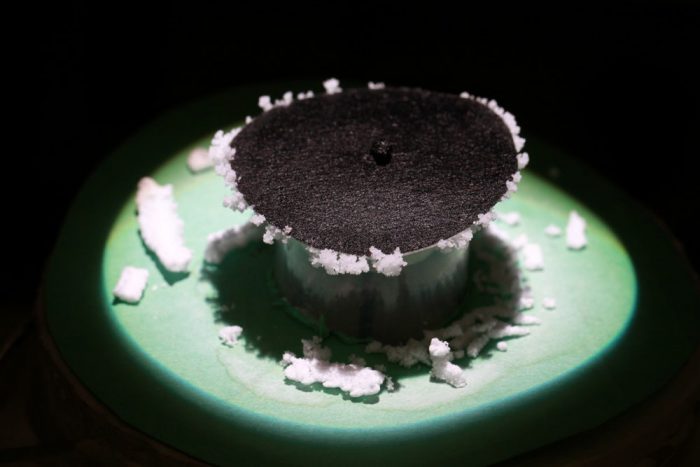In many ways, nothing defines how people live more than how they answer this simple question.
Do you have access to clean drinking water?
Some of us are fortunate enough to be able to say Yes. But approximately 800 million people would answer that question with a No. (And what's more, some of these people live in some of the world's wealthiest countries, like the United States and Canada.)
There are two main factors that go into this lack of water. One is when an area's water source becomes contaminated by waste or other pollutants. The other is that we require freshwater for drinking, which is a problem when over 96% of the world's water is saltwater. And while desalinization (turning saltwater into freshwater) technology does exist, it is super expensive and uses a whole lot of energy.
So for many communities, an invention that inexpensively removes salt from water would literally be a lifesaver. Which is why we're so interested in this...
The Salt Harvester
What is this bizarre, black mushroom that seems to magically rain snow from its edges? Well, it's... actually, we don't know what to call it because its inventors — a team of scientists at Monash University in Melbourne, Australia — haven't given it a name yet. So we're going to call it... The Salt Harvester! (Cool, right?)
Anyway, just what does... THE SALT HARVESTER!... uh, just what does it do?
It uses solar energy to remove almost 100% of the salt from water so it is drinkable. And by using solar energy, it is what is known as a 'passive device'. That means that you never need to plug it in. As long as the sun is shining on it, it's good to go.
Many uses, one device
Clean water is trucked into many parts of the world, where it is a very precious resource. (Getty Embed)
Here's how it works: Water inside the device is drawn up by a cotton string into the dark cap — a black disc of water-attracting paper that is covered in 'carbon nanotubes'. It basically just attracts the Sun's light and turns it into heat.
As this heat evaporates the water turning it into steam, salt travels along the disc and is drawn out. Meanwhile, the steam can then be cooled back into water, which is now drinkable and salt-free.
So far, this device is quite tiny — it's not ready to address a global water crisis. Yet. But having tested it on seawater from South Australia, its inventors believe that a big enough device (covering a square metre, about the size of an small coffee table) could produce litres of safe drinking water a day. And what's more, the salt can be saved and used for things, such as cooking for example. (Like we said, it's The Salt Harvester!) And all without ever being plugged in.
As the lead scientist, professor Xiwang Zhang, put it on the Monash University website, "We hope this research can be the starting point for further research in energy-passive ways of providing clean and safe water to millions of people."
So do we!
 Is it a mushroom covered in frost? Keep guessing... (Yun Xia/Monash University)
Is it a mushroom covered in frost? Keep guessing... (Yun Xia/Monash University)










Wow.